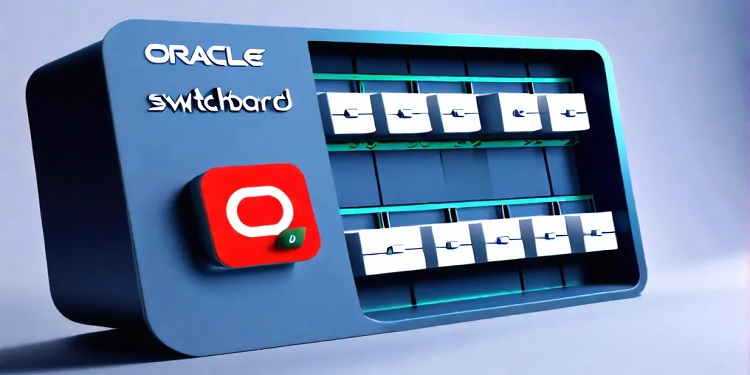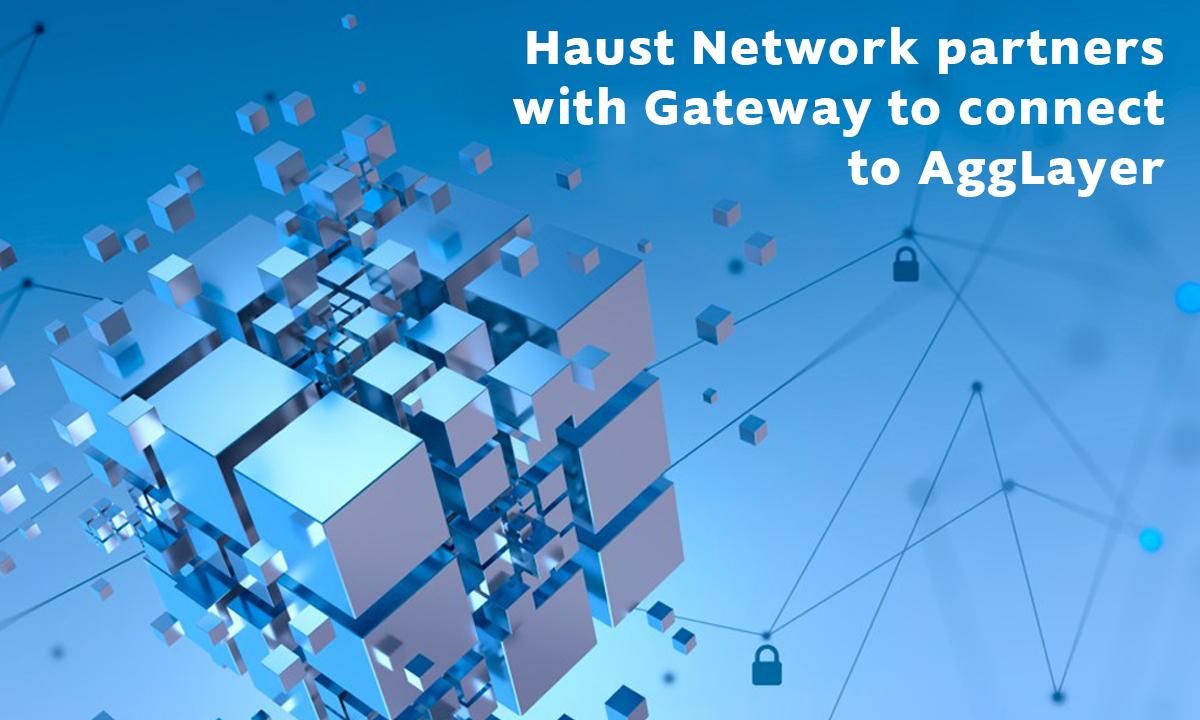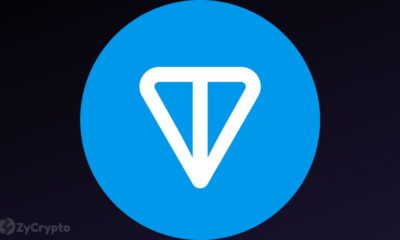DeFi
Fixed-Rate vs. Floating-Rate Loans in DeFi

Sponsored Content
By removing centralized gatekeepers, DeFi (decentralized finance) has created new opportunities for lending and borrowing. Today, within the burgeoning DeFi ecosystem, lending protocols are facilitating billions in crypto-backed loans. Intriguing, right? However, dealing with these open financial systems can be tricky, which may deter traditional users.
If you’re interested in DeFi lending, it’s important to understand the different loan structures available. Unlike traditional banks, which primarily offer fixed-rate and variable-rate loans, DeFi incorporates a slight variation of fixed-rate and variable-rate models that cater to a variety of needs. In this article, we’ll explore these two dominant lending approaches and an innovative platform, “Rock”, which can help you get crypto loans easily. But first, let’s take a detailed look at DeFi loans.
Introduction to DeFi (Decentralized Finance) Lending
At its core, DeFi lending facilitates secure and transparent loan transactions directly between borrowers and lenders, bypassing the need for intermediaries. Here’s a breakdown of how it works:
- Smart contracts: These self-executing programs on the blockchain automate the entire lending process. They ensure the secure transfer of funds, establish loan terms, and manage repayments, all without the intervention of a central authority.
- Peer-to-peer loans: Borrowers connect directly to lenders through DeFi protocols. Lenders deposit their crypto assets into lending pools, providing liquidity to borrowers. Borrowers can then access loans from these pools by providing collateral in the form of other cryptocurrencies.
- Transparency and immutability: All transactions within a DeFi lending protocol are recorded on a public blockchain. This ensures transparency and immutability, meaning transactions cannot be changed or deleted. And it promotes trust and accountability within the DeFi ecosystem.
DeFi lending is primarily dominated by two types of loans: variable-rate and fixed-rate. And each comes with its own set of benefits and risks, depending on market conditions and borrowing needs. Let’s take a closer look at each of these options now.
What are variable rate loans?
Floating-rate loans, also known as variable-rate loans, are the most common type of loan offered in DeFi. These loans come with interest rates that fluctuate in real-time based on market conditions and the supply and demand dynamics of the underlying lending protocols. When there is a high demand for loans and a limited supply of funds, interest rates tend to increase. Conversely, when there is an abundance of liquidity in the pool, interest rates can decrease.
Here are the two popular protocols for variable rate loans: Compound and Aave.
- Compound: It is one of the leading DeFi lending protocols that allows users to lend and borrow a variety of cryptocurrencies. Compound’s interest rates are determined algorithmically based on the supply and demand of each asset in the protocol. Users can earn interest on their deposits and borrow assets by providing collateral.
- Aave: Aave is another major DeFi lending protocol that offers a wide range of assets for lending and borrowing. Aave offers both stable and floating interest rate options for borrowers. The floating interest rate fluctuates based on market conditions, while the stable rate offers a more predictable borrowing cost over a certain period of time.
Common Use Cases for Variable Rate Loans
The variable nature of floating rate loans makes them particularly suitable for certain DeFi use cases:
- Leverage: Borrowers can use variable rate loans to leverage their cryptocurrency holdings and amplify their market exposure. Flexible rates allow them to maximize their borrowing power and potential returns.
- Yield agriculture: DeFi yield farmers often use floating-rate loans to fund their positions in liquidity mining protocols. The ability to frequently adjust loan amounts and repay them based on rate changes allows them to maximize their capital efficiency.
- Arbitration: Traders can use floating rate loans to capitalize on price spreads between lending platforms and DeFi exchanges, profiting from rate fluctuations.
Now let’s look at the advantages and disadvantages of variable rate loans.
Advantages of variable rate loans
- Potential for lower rates during periods of low demand
- No prepayment penalty, providing flexibility
- Often there is no fixed term, allowing borrowers to repay at any time.
Disadvantages of Variable Rate Loans
- Interest rates may increase unexpectedly, potentially increasing the cost of the loan
- It is difficult to plan long-term expenses due to fluctuations in rates
- Risk of liquidation in the event of a fall in the value of collateral or an increase in interest rates
Overall, floating rate loans have become popular in DeFi due to their dynamic nature and suitability for speculative strategies. However, floating rates also introduce some unpredictability, which can be problematic for long-term budgets or investment horizons extending beyond a few weeks/months. This is where fixed rate loans offer an alternative structure.
What are fixed rate loans?
Unlike variable rates, fixed-rate loans maintain a constant interest rate for the entire term of the loan agreement. This eliminates the uncertainty associated with fluctuating interest rates in DeFi lending pools. With a fixed rate, you know exactly how much your monthly payments will be, making budgeting and financial planning easier. This predictability makes them an attractive option for borrowers who prefer certainty in their repayment plans.
Notitional Finance is one of the most popular protocols for fixed rate loans:
- Notional finance: Notional is a DeFi protocol that specializes in fixed-rate lending and borrowing. It allows users to lock in a fixed interest rate for a set period of time, providing stability and predictability. Notional achieves this by creating tokenized debt instruments that represent fixed-rate loans.
Common Use Cases for Fixed Rate Loans
- Debt refinancing: Borrowers can use fixed-rate loans to refinance their existing debt at a more favorable rate. This helps them manage their debt more effectively and reduces the risk of rising interest rates.
- Major purchases: For large expenses like purchasing a property or financing a business, fixed-rate loans provide the stability needed to accurately plan long-term finances.
- Long term investments: Investors who wish to hold their positions for an extended period of time can benefit from the predictability of fixed rate loans. This is particularly useful in volatile markets where floating rates can fluctuate widely.
Now let’s look at the advantages and disadvantages of fixed rate loans.
Benefits of Fixed Rate Loans
- Predictable interest payments, making budgeting easier
- Protection against rising interest rates
- Suitable for long-term financial planning
Disadvantages of Fixed Rate Loans
- Potentially higher initial rates compared to variable rate loans
- Less flexibility, often with penalties for early repayment
- Losing potential savings if market rates fall
If you want to learn more about fixed rate loans, check out this comprehensive document guide.
While both floating-rate and fixed-rate loans have their pros and cons, navigating DeFi lending protocols and managing loans directly on-chain can still be challenging for many. To truly harness the benefits of decentralized finance for mainstream users, accessible interfaces are needed. That’s where platforms like Rocko come in. So, what is Roko and how can it help you with DeFi lending? Read on to find out.
Introducing Rocko: Your DeFi Borrowing Companion
Rocko positions itself as a user-friendly platform designed to simplify the DeFi borrowing experience, whether you choose a fixed or variable rate loan. Whether you are an experienced DeFi user or just getting started with DeFi, Rocko can be a valuable asset in unlocking the potential of DeFi lending.
Here’s how Rocko can supercharge your DeFi borrowing journey:
- Simplified loan setup process: Rocko’s intuitive interface simplifies the lending process, eliminating the complexities often associated with DeFi protocols.
- Loan Options Comparison Tool: Compare lending offers from different DeFi protocols, allowing you to choose the best deal based on your needs and preferences.
- Risk management tools: Rocko can provide you with information and tools to help you manage your loan effectively. This may include features such as collateral ratio tracking and potential liquidation warnings based on market fluctuations.
As you can see, the benefits of this platform are endless. With Rocko, users can enjoy the benefits of both variable and fixed-rate loans, allowing them to make informed financial decisions in the DeFi ecosystem. So, whether you’re looking to leverage assets for yield farming, refinance debt with a fixed-rate loan, or make a large purchase, Rocko is here to provide you with a streamlined solution that simplifies the crypto lending process and gives you peace of mind!
Conclusion
Choosing between a fixed-rate loan and a variable-rate loan depends on your personal financial goals and risk tolerance. If you value stability and predictability, fixed-rate loans can provide peace of mind with regular interest payments. However, if you’re comfortable with some volatility and potentially want a lower initial interest rate, variable-rate loans may be a more attractive option.
Whatever your choice, Rocko can be your valuable partner in helping you understand the world of DeFi borrowing. With its user-friendly interface, comprehensive loan comparison tools, and risk management features, Rocko allows you to make informed decisions for a secure and successful DeFi borrowing experience.
Would you like to know more about this innovative platform? Join Rocko’s Waiting List and unlock the potential of DeFi borrowing!
Disclaimer: The authors of sponsored articles are solely responsible for the opinions expressed or offers made. These opinions do not necessarily reflect the official position of Daily News from Hungaryand the editorial staff cannot be held responsible for their veracity.
DeFi
Is Zypto Wallet a Reliable Choice for DeFi Users?

Zypto wallet is a newcomer in the crypto landscape and has already made waves for its exclusive benefits and security features.
In this article, we will take a look at the Zypto crypto wallet and how it can help users securely manage their digital assets, interact with Web3 applications, and explore the world of Challenge.
What is Zypto Wallet?
Zypto App is a newly launched versatile crypto wallet that supports a wide range of coins and tokens, along with seamless access to Web3 applications, token exchanges, virtual crypto cards, a gift card marketplace, and a payment gateway.
What are the pros and cons of Zypto Wallet?
Benefits
- User-friendly: Zypto’s user interface is very intuitive with a simple setup process.
- Multi-Chain DEX Swaps: Zypto facilitates trading between thousands of cryptocurrencies, thanks to its versatile multi-chain token swap feature.
- Built-in dApp Browser: You can access Web3 applications directly in your wallet using the in-app dApp browser.
- Live Customer Support: The wallet has an in-app live customer support team that responds quickly to all your queries.
- Rewards Program: Zypto has a loyalty program that allows you to earn rewards, improving the overall user experience.
- Virtual crypto cards: The wallet makes it easy and reliable to use digital currencies for everyday transactions through its range of virtual cryptocurrency cards.
The inconvenients
- Limited analysis tools: Zypto offers advanced charting features and limited technical analysis tools that might not appeal to experienced cryptocurrency traders.
What DeFi products and services does Zypto Wallet offer?
Zypto allows you to securely manage a wide range of cryptocurrencies across multiple blockchains, acting as a user-friendly entry point into the Web3 ecosystem.
Multi-Chain Wallet
As a multi-chain wallet, Zypto supports hundreds of thousands of digital assets across different blockchains. Zypto is also committed to adding support for more chains in the coming months, expanding its universe of explorable assets.
Multi-Chain Exchange Functionality
Instead of the tedious process of selling one token on one exchange and buying another of the same type hosted on a different blockchain, Zypto offers a cross-chain swap feature.
DApp Browser
Another easy-to-use feature is the in-app dApp browser. Simply bring up the browser from the small globe icon at the bottom of your screen and it will first take you to the Zypto homepage.
The browser provides all the features under one application so you don’t miss anything that warrants opening a separate browser.
Zypto DeFi Wallet Review
User experience
Zypto’s ease of use is one of its main advantages. Once the app is downloaded, you can view your wallet from the home screen. Other buttons at the bottom of your screen will take you to prepaid virtual cards, an Explore Zypto page, where you can send, receive, exchange, buy and sell tokens, or access the dApp browser and your contact list.
Zypto requires KYC information before processing cards, as it is part of regulatory compliance. Contacts are another benefit: instead of tediously copying and pasting long addresses, simply save them under a contact name.
How to set up your Zypto wallet?
To start using Zypto, simply download the app. Once installed, you’re ready to go.
You can create a new wallet by pressing the Create Wallet button or import an existing wallet by writing (or pasting) your passphrase to verify your identity. You can also import it in read-only mode, in which case you only need the wallet name and address.
Conclusion: The Verdict
Zypto is relatively new in the DeFi space, but it’s already gaining popularity among different types of users. Those who prefer everything neatly organized in one place will find the app appealing, as will those who prefer its rich features and integration with fiat payment methods over on- and off-ramp cryptocurrencies.
DeFi
Switchboard Revolutionizes DeFi with New Oracle Aggregator

Switchboard, a leading oracle network known for its permissionless and fully customizable features, has launched a revolutionary oracle aggregator. This new tool enables seamless integration of data across multiple oracle networks, including household names like Chainlink and Pyth Network. In doing so, it provides users with access to a wide range of data sources, improving the versatility and reliability of decentralized finance (DeFi) applications.
Addressing security and cost challenges in DeFi
The Oracle Aggregator is designed to address significant security and cost challenges in the DeFi sector. In 2023, the Web3 industry saw losses exceeding $500 million due to price manipulation attacks, a notable increase from $403.2 million in 2022. These attacks accounted for 33% of the total value lost due to hacks. By expanding the diversity and volume of data sources, Switchboard aims to strengthen the resilience of data streams against such malicious activities, thereby improving the overall security of DeFi platforms.
Empowering developers with customizable data streams
Switchboard’s new Oracle Aggregator allows developers to design custom data feeds that draw from a wide range of sources, both within and outside of the Switchboard platform. This flexibility allows developers to create tailored feeds that meet their specific needs, moving away from rigid templates. The platform’s permissionless nature and lack of gatekeepers ensure developers have complete control over the data feeds they create.
Switchboard CEO Chris Hermida noted that the company’s philosophy has always been to empower developers rather than constrain them. By launching Oracle Aggregator, Switchboard allows developers to use data from a variety of sources, including Pyth and Chainlink, enabling innovation and customization of their projects. Hermida noted that this new capability allows developers to break away from traditional models and take a more personalized approach to data integration.
Plug-and-Play approach for enhanced security
Switchboard’s Oracle Aggregator offers a plug-and-play approach that allows users to leverage multiple Oracle networks, enhancing data security and reliability. By aggregating data from multiple sources, developers can improve the scalability and redundancy of their data feeds, setting a new industry standard as the first generalized Oracle aggregator. This scalability ensures that projects can mitigate risks associated with data manipulation and other vulnerabilities.
One of the most notable features of Oracle Aggregator is its customizable nature. Developers can selectively choose trusted data sources, eliminating those that do not meet their standards. This level of control is crucial for projects that aim to protect their operations from potential threats.
Innovative use of secure execution environments
Switchboard uses Trusted Execution Environments (TEEs) to ensure that data aggregation occurs entirely off-chain. This innovative approach minimizes gas costs associated with on-chain operations while preserving data integrity. Aggregated data is then shared with users in a single on-chain transaction, simplifying the process and reducing operational expenses.
Mitch Gildenberg, Switchboard’s CTO, highlighted the platform’s developer-centric design. He noted that the platform is designed to put developers in control, allowing them to fine-tune each data flow to their specific needs. This approach reflects Switchboard’s commitment to understanding and meeting developer needs.
Expansion and impact on the industry
Since its launch in 2021, Switchboard has seen significant growth, amassing over 180,000 users and achieving a total valuation of $1.6 billion. The company’s commitment to user autonomy and inclusion has been a driving force behind its rapid expansion in the Web3 ecosystem. Earlier this year, Switchboard raised $7.5 million in a Series A funding round co-led by Tribe Capital and RockawayX, with additional support from leading investors including the Solana Foundation, Aptos Labs, Mysten Labs, Subzero Ventures, and Starkware.
Conclusion
As the DeFi industry continues to evolve, tools like Switchboard’s Oracle Aggregator will play a crucial role in building robust and secure decentralized applications. By giving developers the ability to integrate and customize data feeds from multiple sources, Switchboard is setting new industry standards, driving innovation, and improving the overall security of the Web3 ecosystem.
DeFi
Bitcoin is the solution to inevitable hyperfinancialization

Disclosure: The views and opinions expressed here belong solely to the author and do not represent the views and opinions of the crypto.news editorial team.
If there is one thing that is becoming clear, it is that hyperfinancialization is inevitable, and our best chance of achieving it successfully is through Bitcoin (Bitcoin). This decentralized cryptocurrency, known for its fixed supply and robust security, offers a unique solution to the coming problem of wealth inequality and concentrated power. By embracing Bitcoin, we can create a more transparent and resilient financial future, or we risk losing our financial sovereignty to a handful of corporations.
The hyper-financialization of the world has already begun, with the financial sector becoming a relatively larger part of the economy, in terms of size and importance. Financial structures are also expanding rapidly in other sectors.
For example, in 2023, Americans spent more than $100 billion on state-run lotteries, according to According to The Economist, the poorest citizens spent huge amounts on tickets. In addition, the online sports betting market, valued at more than $100 billion, is projected to generate nearly $46 billion in revenue this year, with a user penetration rate of 3.9%.
Moreover, Robin HoodRobinhood, a commission-free investment platform popular with retail investors, saw its funded customers climb to 23.9 million and its assets under custody soar to $129.6 billion, another prime example of the hyper-financialization trend. Robinhood began to gain traction during the COVID-19 pandemic in 2020, and the hyper-financialization trend was exacerbated. For people stuck at home, the online world became their primary means of entertainment and social interaction.
Governments then injected billions of dollars into the market, encouraging people to bet their money on the markets. The subsequent surge in inflation and the weakness of the global economy further intensified this trend, with people having to bear the burden of survival.
This has led to an increased proliferation of financial structures in different spheres of life, meaning that both manufacturers and consumers are taking this route.
As we can see, cryptocurrency has grown from less than $150 billion in March 2020 to $2.7 trillion today. This explosive growth not only accelerates the trend towards the hyperfinancialization of finance with yield farming, resttaking, points, rewards and meme coins, but also that of art via NFTs, social dynamics via social tokens and platforms like Friendtech, game with play-to-win conceptsand physical assets through tokenization.
There are also prediction markets that allow people to bet on all sorts of events. These range from the outcome of the 2024 US presidential election to whether Bitcoin will hit $100,000 by the end of the year, whether Drake’s verse in “Wah Gwan Delilah” is an AI, what the opening weekend box office of “Bad Boys: Ride or Die” will be, or whether the Fed will raise rates this year.
This growing trend towards hyper-financialization is detrimental to society because it widens already large wealth gaps by increasing wealth concentration and contributing to economic inequality. Not to mention that it will lead to even larger asset bubbles, a focus on the short term at the expense of the long term, and an increased interest in speculative investments.
Here, cryptography can help find a better way to address hyperfinancialization. After all, the wealth is in the middlemen, and using blockchain technology removes this third party from the equation, bringing reliability, traceability, and immutability to the market. Blockchain actually allows hyperfinancialization to be fair and transparent.
Before the advent of cryptocurrencies, not everyone was allowed to participate in markets. But through disintermediation and permissionlessness, cryptocurrencies have made markets more efficient and accessible. Not to mention, everyone gains full control over their data, mitigating the risk of data manipulation and privacy violations.
This is where Bitcoin offers the perfect solution. This decentralized peer-to-peer network enables financial inclusion and censorship resistance, which is critically important in today’s world where organizations and governments are encroaching on people’s rights. This network has a decade-and-a-half-old history behind it, providing a robust and secure platform for people to achieve financial sovereignty.
This trillion-dollar asset class also serves as a hedge against inflation, allowing holders to preserve their wealth over time. Unlike fiat currencies, which are devalued by politicians, Bitcoin’s fixed supply and decentralization protect it from such pressures, making it the perfect asset to own in a world where everyone is competing to extract value.
The largest crypto network is now also seeing experimentation, as developers and investors use it as a foundation to build a truly decentralized future of finance and value.
For so long, Bitcoin has been a low-activity blockchain, with its key role being to store value. While Bitcoin has played a passive role in the blockchain world for all these years, it has finally changed with Taproot Upgrade which brought NFTs into the Bitcoin world. Then there was a growing interest in tokenization, also from institutions like Blackrock.
This drive to expand Bitcoin’s utility has sparked a wave of innovation, and the day is not far when BTC could dethrone Ethereum as the go-to blockchain for decentralized finance. Several aspects, including Bitcoin’s robust security framework, widespread acceptance, and institutional interest, position Bitcoin at the forefront of defi innovation.
So, with these developments, Bitcoin is now evolving to begin its new era of utility and innovation after realizing its original vision of being a peer-to-peer electronic currency system.
As everything becomes a financial asset and tradable, attention, which is a scarce resource, will become even more crucial. Bitcoin has already cemented its position in the attention economy, and the newfound interest in regulatory complaints and widespread adoption of BTC to boost productivity will allow it to lead the future of digital economies. This portends a world where crypto leads the charge towards hyperfinancialization, with BTC in the driver’s seat.
So, to conclude, the resilient Bitcoin network that has spectacularly survived the test of time may have started as a means to facilitate the seamless flow of monetary value, but today, it has become a foundation of hope not only to protect against a future that is going to be super fixated on the financial aspect, but also to take advantage of it to create wealth and prosper.
Jeroen Develter
Jeroen Develter is the Chief Operating Officer at Persistence Labs and a seasoned professional in financial and tech startup environments. With a decade of international consulting, management, entrepreneurship and leadership experience, Jeroen excels at analyzing complex business cases, establishing streamlined operations and creating scalable processes. With Persistence, Jeroen oversees all product and engineering efforts and is deeply passionate about improving the adoption of Bitcoin defi, or BTCfi, and using intents to develop scalable, fast, secure and user-friendly solutions. His work at Persistence Labs addresses the significant interoperability challenges between Bitcoin L2s. In addition, Jeroen is also a co-host of the Stacked Podcast, a platform to gain knowledge about Bitcoin and cryptography from prominent Bitcoin creators.
DeFi
Haust Network Partners with Gateway to Connect to AggLayer

Dubai, United Arab Emirates, August 1, 2024, Chainwire
Consumer adoption of cryptocurrencies is a snowball that is accelerating by the day. More and more people around the world are clamoring for access to DeFi. However, the user interface and user experience of cryptocurrencies still lag behind their fundamental utility, and users lack the simple and secure access they need to truly on-chain products.
Haust Network is a network and suite of products focused on changing this paradigm and bringing DeFi to the masses. To achieve this goal, Haust Network has announced its far-reaching partnership with bridgeseasoned veterans in rapidly delivering revolutionary blockchain utilities for projects. The Gateway team empowers blockchain developers to build DAOs, NFT platforms, payment services, and more. They drive adoption of crypto primitives for individuals and institutions around the world by helping everyone build their on-chain presence.
Gateway specializes in connecting sovereign blockchains to the Aggregation Layer (AggLayer). The AggLayer is a single unified contract that powers the Ethereum bridge of many disparate blockchains, allowing them all to connect to a single unified liquidity pool. The AggLayer abstracts away the complexities of cross-chain DeFi, making tedious multi-chain transactions as easy for the end user as a single click. It’s all about creating access to DeFi, and with Polygon’s technology and the help of Gateways, Haust is doing just that.
As part of their partnership, Gateway will build an advanced zkEVM blockchain for Haust Network, leveraging its extensive experience to deploy ultra-fast sovereign applications with unmatched security, and enabling Haust Network to deliver its products to its audience.
The recently announced launch of the Haust Wallet is a Telegram mini-app that provides users with access to DeFi directly through the Telegram interface. Users who deposit funds into the wallet will have access to all standard send/receive services and generate an automatic yield on their funds. The yield is generated by Haust Network’s interconnected network of smart contracts, Haustoria, which provides automated and passive DeFi yielding.
As part of this partnership, the Haust Network development team will work closely with Gateway developers to launch Haust Network. Gateway is an implementation provider for Polygon CDK and zkEVM technology, which the Haust wallet will leverage to deliver advanced DeFi tools directly to the wallet users’ fingertips. Haust’s partnership with Gateway comes shortly after the announcement of a high-profile alliance with the Polygon community. Together, the three will work to build Haust Network and connect its products to the AggLayer.
About Haust Network
Haust Network is an application-based absolute liquidity network and will be built to be compatible with the Ethereum Virtual Machine (EVM). Haust aims to provide native yield to all users’ assets. In Telegram’s Haust Wallet, users can spend and collect their cryptocurrencies in one easy place, at the same time. Haust operates its network of self-balancing smart contracts that interact across multiple blockchains and then efficiently funnel what has been generated to Haust users.
About Gateway
bridge is a leading white-label blockchain provider that offers no-code protocol deployment. Users can launch custom blockchains in just ten minutes. They are an implementation provider for Polygon CDK and have already helped projects like Wirex, Gnosis Pay, and PalmNFT bring new utility to the crypto landscape.
About Polygon Labs
Polygon Laboratories Polygon Labs is a software development company building and developing a network of aggregated blockchains via the AggLayer, secured by Ethereum. As a public infrastructure, the AggLayer will aggregate the user bases and liquidity of any connected chain, and leverage Ethereum as the settlement layer. Polygon Labs has also contributed to the core development of several widely adopted scaling protocols and tools for launching blockchains, including Polygon PoS, Polygon zkEVM, and Polygon Miden, which is currently under development, as well as the Polygon CDK.
Contact
Lana Kovalski
haustnetwork@gmail.com
-

 DeFi11 months ago
DeFi11 months agoSwitchboard Revolutionizes DeFi with New Oracle Aggregator
-

 News12 months ago
News12 months agoLatest Business News Live Updates Today, July 11, 2024
-

 DeFi11 months ago
DeFi11 months agoIs Zypto Wallet a Reliable Choice for DeFi Users?
-

 DeFi1 year ago
DeFi1 year ago👀 Lido prepares its response to the recovery boom
-

 Fintech12 months ago
Fintech12 months agoFinTech LIVE New York: Mastercard and the Power of Partnership
-

 DeFi11 months ago
DeFi11 months agoEthena downplays danger of letting traders use USDe to back risky bets – DL News
-

 Fintech1 year ago
Fintech1 year ago121 Top Fintech Companies & Startups To Know In 2024
-

 Fintech1 year ago
Fintech1 year agoFintech unicorn Zeta launches credit as a UPI-linked service for banks
-

 ETFs1 year ago
ETFs1 year agoGold ETFs see first outing after March 2023 at ₹396 cr on profit booking
-

 News1 year ago
News1 year agoSalesforce Q1 2025 Earnings Report (CRM)
-

 DeFi1 year ago
DeFi1 year agoTON Network Surpasses $200M TVL, Boosted by Open League and DeFi Growth ⋆ ZyCrypto
-

 Videos1 year ago
Videos1 year ago“We will enter the ‘banana zone’ in 2 WEEKS! Cryptocurrency prices will quadruple!” – Raoul Pal





